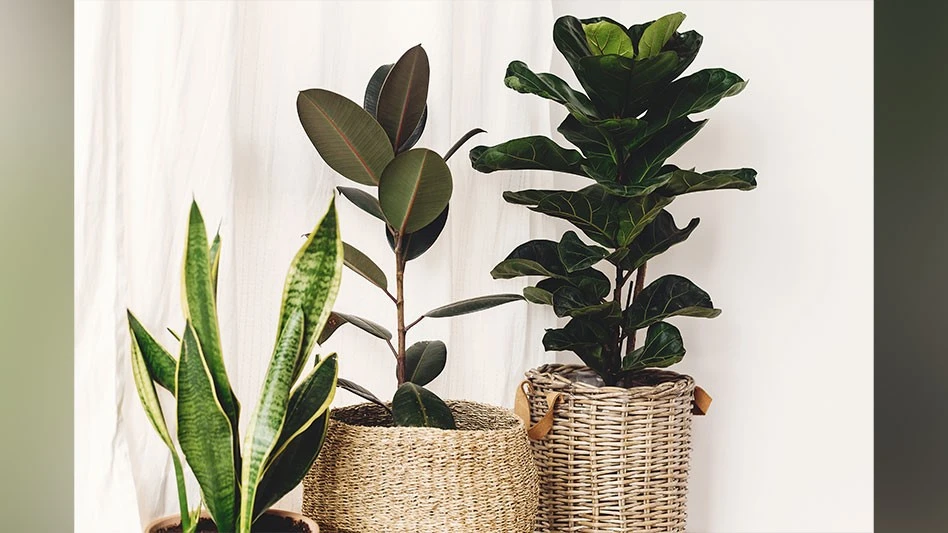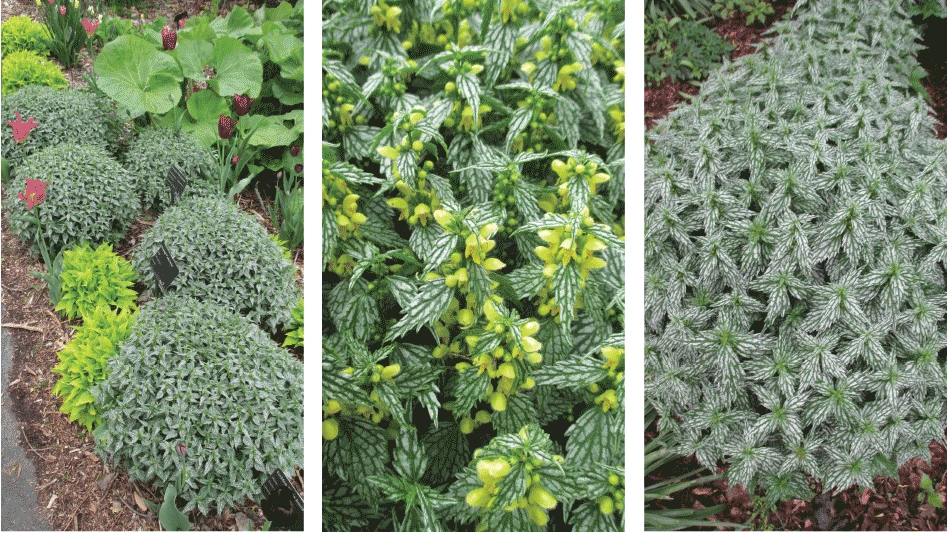
Adobe Stock
While many garden centers saw rising houseplant sales in the years before the pandemic, demand has skyrocketed since 2020 and doesn’t seem to be stopping anytime soon. Nearly 80% of garden centers saw houseplant sales increase last year and even more expect revenues to continue growing year over year in 2022. [Editor’s note: In April 2022, sister publication Garden Center Magazine released exclusive research regarding retail houseplant sales.]
And as houseplant sales continue to grow, they’re becoming an even higher portion of total sales. When the pandemic first hit in 2020, only 6% of garden centers were getting two-fifths or more of their revenue from houseplant sales. Today, that number has jumped to 19%. On the other end of the spectrum, IGCs reporting less than 20% of total sales coming from houseplants has dropped from three-quarters to just half, showing just how important the houseplant division has become for garden centers. Although the industry isn’t seeing the kind of explosive growth it saw when COVID first hit, our research shows that demand is continuing on an upward trend.




A slight change of pace
Overall, garden center houseplant sales aren’t growing at the extreme rates they did when the pandemic hit in 2020. While the vast majority of IGCs are still seeing solid growth in their houseplant departments, the number seeing an increase of more than 15% year over year has slowed from 64% in 2020 to 36% in 2021.
Slightly fewer garden centers are expecting to see an increase in houseplant sales this year, however, with many citing increasing cost of living and rising inflation leaving customers with less disposable income. Others believe that more competition from concerts, vacations, dining out and other social activities will deplete consumers’ budgets for plants.
However, thanks to steady houseplant popularity and solid sales, most garden centers reported increasing stock last year, along with plans to continue growing their houseplant offerings this year.
Growing in-house
According to Garden Center’s research, more IGCs than ever are growing their own houseplant material. In the past two years, less than 40% of retailers reported growing some of their own houseplants, jumping up 28 percentage points this year.
How have you been managing supply chain issues?
Avalow
Avalow grows about a third of its houseplant material and buys the rest in from a “pretty broad array of growers,” Nusser says. Over the past few years, the company has been casting a broader net to find growers that can provide a consistent, reliable supply, and learning what each one specializes in.
A slight change of pace
Overall, garden center houseplant sales aren’t growing at the extreme rates they did when the pandemic hit in 2020. While the vast majority of IGCs are still seeing solid growth in their houseplant departments, the number seeing an increase of more than 15% year over year has slowed from 64% in 2020 to 36% in 2021.
Slightly fewer garden centers are expecting to see an increase in houseplant sales this year, however, with many citing increasing cost of living and rising inflation leaving customers with less disposable income. Others believe that more competition from concerts, vacations, dining out and other social activities will deplete consumers’ budgets for plants.
However, thanks to steady houseplant popularity and solid sales, most garden centers reported increasing stock last year, along with plans to continue growing their houseplant offerings this year.
What are they worth?
Explosive growth in the houseplant market is leading to steep rises in retail prices as volatile demands keep changing the game. Are your wholesale prices following suit? By Kate Spirgen
Houseplant prices have risen to new heights in recent years, driven by social media, increased awareness of plants’ benefits and a frenzy of collectors in search of the newest (and rarest) varieties.
An overwhelming majority of garden centers have bumped up their average houseplant prices over the past three years, and by increasing margins. Indoor plants and related items have been making up much larger portions of retail revenue each year and the cost of rare houseplants seems to constantly be reaching new heights.
North Haven Gardens in the Dallas area doubled its average houseplant inventory over the last year from $10,000-$15,000 to $25,000-$30,000 after seeing a 318% increase in the department’s revenue over the past seven or eight years. “I need a couple years to kind of evaluate that and see if the added inventory level is going to result in the same amount of turns, but so far it appears to be looking pretty good,” says Cody Hoya, general manager.
Dothan Nurseries in Alabama has also seen strong growth over the past seven or eight years, with a huge spike in the last two. While sales are still healthy, the IGC is starting to see some of the houseplant mania dying down and is expecting a slight downturn in the category this year.
“I think some of the shiny luster has worn off,” says John David Boone, owner. “We used to get a truck of plants in and posted it on social media, and within hours people would be here. We’re still making really good money but it seems like the craziness has worn off a little bit.”
Dothan instead is going to start cutting down on houseplant offerings, focusing on high-volume sales like maidenhair ferns, pothos and Sansevieria.
Ontario-based Robert Plante Greenhouses is adopting the opposite strategy, striving to provide its customers with the best selection in its market. That includes a range of everything from inexpensive starter plants through the incredibly sought-after varieties like Philodendron White Wizard, White Princess, Ring of Fire and Pink Princess, which can run up to $600.
“We carry pretty much all the varieties we can get our hands on,” says Colin Matassa, manager.
Social media, particularly Instagram, has been a driving force behind new additions to consumers’ houseplant collections. Often, indoor gardeners are finding their next houseplant obsession online before those plants even hit their local garden center’s benches.
“Social media has brought us closer in many ways and so it’s very easy today to get a sense of how rare something is or how widely available something is,” says Bridget Behe, professor of horticultural marketing at Michigan State University. “So I think when you fuel a competitive spirit on top of the access to information, it can drive prices up. But remember, a person does not have to be rational to spend $800 on a plant.”
But high demand isn’t the only factor causing price increases. Rising wholesale costs and supply chain issues are factoring into the rising retail cost of houseplants. And due to inflation, many consumers are going to have less disposable income as rent, groceries and gas prices continue to increase. That could mean less spending on what Behe calls “affordable luxuries,” like plants.
But the interest in rare and unique houseplants isn’t going away any time soon. Instagram continues to fuel houseplant hunters’ search for the next new, exciting thing.
“People see these plants before they come into the retailer. They’re getting inspired on social media and going on the hunt,” Behe says.
Hoya points out that the demographic for the more high-end houseplants may be shifting soon, especially as younger customers return to spending their disposable income on things like concerts, dining out and traveling more now that COVID restrictions are gone.
While many garden centers saw rising houseplant sales in the years before the pandemic, demand has skyrocketed since 2020 and doesn’t seem to be stopping anytime soon. Nearly 80% of garden centers saw houseplant sales increase last year and even more expect revenues to continue growing year over year in 2022.
And as houseplant sales continue to grow, they’re becoming an even higher portion of total sales. When the pandemic first hit in 2020, only 6% of garden centers were getting two-fifths or more of their revenue from houseplant sales. Today, that number has jumped to 19%. On the other end of the spectrum, IGCs reporting less than 20% of total sales coming from houseplants has dropped from three-quarters to just half, showing just how important the houseplant division has become for garden centers.
Although the industry isn’t seeing the kind of explosive growth it saw when COVID first hit, our research shows that demand is continuing on an upward trend.









Get curated news on YOUR industry.
Enter your email to receive our newsletters.
Explore the August 2022 Issue
Check out more from this issue and find your next story to read.
Latest from Nursery Management
- NewGen Boxwood added to Proven Winners ColorChoice line
- Terra Nova releases new echinacea variety, 'Fringe Festival'
- American Horticultural Society names winners of 2025 AHS Book Awards
- Nufarm announces unified brand
- American Horticultural Society announces winners of 2025 Great American Gardeners Awards
- Shifting the urban environment
- The Growth Industry Episode 3: Across the Pond with Neville Stein
- What's in a name?







